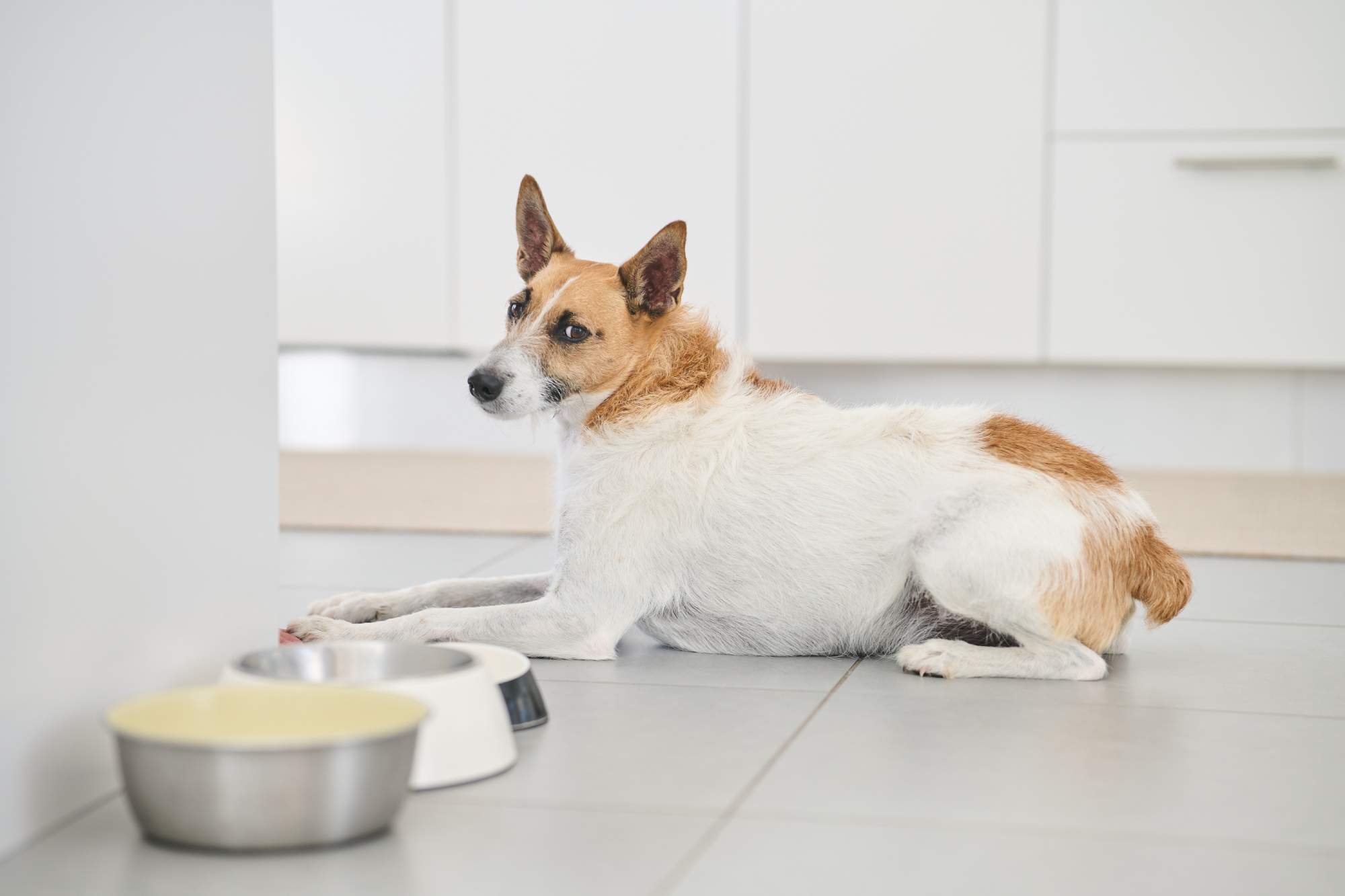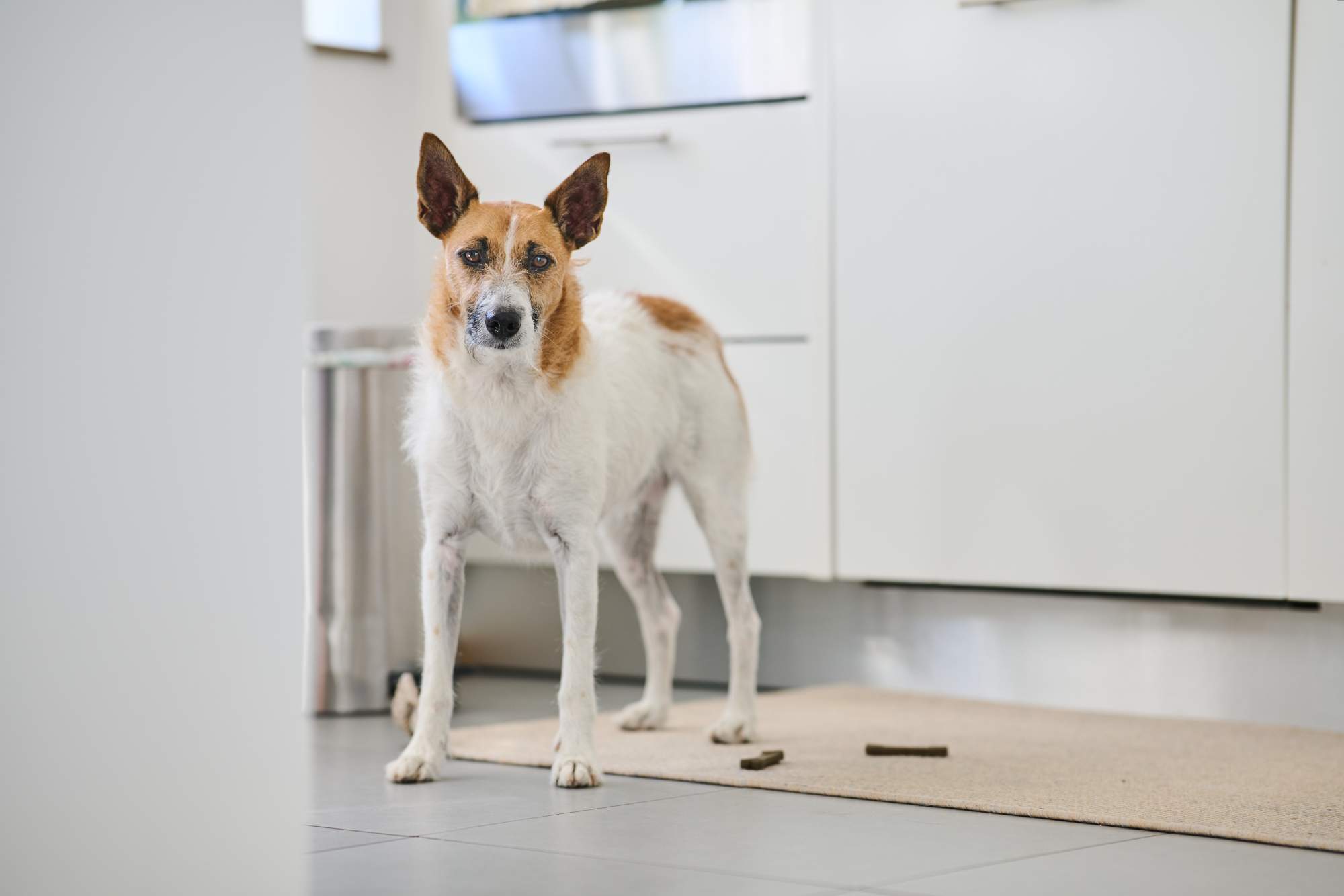How to deal with separation anxiety in dogs
In this article:
Separation anxiety is a common issue in dogs and can lead to excessive barking, destroyed furniture, and high stress levels for both dog and owner. The good news is that there are solutions! With the right training, a safe environment, and in some cases calming supplements, you can help your dog feel more balanced. In this guide, we’ll look at the symptoms, causes, and practical steps you can take to ease your dog’s anxiety.
5 Common Signs of Separation Anxiety:
• Barking, howling, or whining for extended periods
• Destructive behaviours, such as chewing furniture or rummaging through bins
• Accidents indoors, even though the dog is normally house-trained
• Excessive restlessness, panting, or drooling
• Attempts to escape or get out when you leave the house
Common Causes of Destructive Behaviour
Separation anxiety develops when a dog becomes overly stressed or anxious when left alone. It’s not a sign of disobedience – it’s a reaction to fear and insecurity. Some common causes include:
Lack of training to be alone
Puppies who aren’t gradually accustomed to being left on their own may develop separation anxiety later in life. If a dog has always had company, being alone feels new and frightening.
Changes in environment or routine
Moving house, the arrival of a new family member, or an owner returning to work after a long period at home can all trigger anxiety. Sudden changes to daily life can leave dogs feeling insecure.
Traumatic experiences
For example, being abandoned. Rescue dogs or those with a history of instability may carry past experiences that make them especially sensitive to being left.
Over-attachment to their owner
Some dogs form an exceptionally strong bond with their person and struggle to feel secure without them. This can be made worse if the dog is always included in every activity and never encouraged to develop independence.

How to Help a Dog with Separation Anxiety
There are several ways to support a dog who struggles with being left alone. But it’s important to remember that overcoming separation anxiety takes time – and setbacks along the way are perfectly normal. Be patient, and celebrate even the small wins; they’re all steps in the right direction. With consistent training and support, your dog can gradually learn to feel more secure when left alone. And remember, you’re not alone – separation anxiety is common and not a sign of failure as a dog owner.
1. Train Gradually
Teaching a dog to cope with alone time takes patience. Start with very short periods – even just leaving the room for a few seconds – and build up slowly as your dog becomes more comfortable. Increase both the time and distance in small steps.
2. Exercise Before You Leave
A long walk before you go out – ideally at least 30 minutes – can help your dog feel calmer. Physical exercise and mental stimulation make it easier for them to relax and rest while you’re away.
3. Keep Hellos and Goodbyes Low-Key
Avoid making a fuss when leaving or returning home. Greet your dog calmly and neutrally to reduce anticipation and stress.
5. Mix Up Your Routine
Dogs quickly learn the cues that mean you’re leaving, such as grabbing your keys or putting on shoes. Vary these behaviours occasionally so they don’t become triggers for anxiety.
6. Don’t Punish Your Dog
Chewing, barking, or accidents are signs of stress, not disobedience. Punishment only adds to their anxiety. Focus on training, patience, and building their confidence instead.
7. Use Everyday Tricks
Simple strategies can make a big difference. Try using a pet camera to monitor behaviour when you’re out. Freeze stuffed toys or chews so they last longer, and reserve a special treat or toy that’s only given when you leave. This builds a positive association with alone time.
Calming Support for Dogs with Separation Anxiety
Not sure which product is right for your dog? Read our product guide on calming supplements for dogs.
Preventive Tips
- Start training your dog to be alone from puppyhood.
- Vary your routines so your dog doesn’t always know when you’re about to leave.
- Make sure your dog gets plenty of exercise and mental stimulation before being left alone.
- Leave your dog alone for short periods often, rather than long periods less frequently.
Frequently Asked Questions
This varies depending on age, training, and personality. An adult dog that has been gradually trained to be alone can usually cope with 4–6 hours. However, dogs with separation anxiety need to be carefully built up to shorter periods.
It depends on the dog’s background and how consistently the training is carried out. Some dogs become more confident within a few weeks, while others may need several months of gradual training.
Yes. Calming supplements can be a useful support alongside training and environmental adjustments. Products containing ingredients such as L-tryptophan, B-vitamins, and herbal extracts promote relaxation without making dogs drowsy.
If your dog’s anxiety is severe, significantly impacts daily life, or does not improve despite consistent training, it’s best to seek help from a vet, professional trainer, or behaviourist for a tailored solution.
How to deal with separation anxiety in dogsEmpty heading
In this article:
Separation anxiety is a common issue in dogs and can lead to excessive barking, destroyed furniture, and high stress levels for both dog and owner. The good news is that there are solutions! With the right training, a safe environment, and in some cases calming supplements, you can help your dog feel more balanced. In this guide, we’ll look at the symptoms, causes, and practical steps you can take to ease your dog’s anxiety.
5 Common Signs of Separation Anxiety:
• Barking, howling, or whining for extended periods
• Destructive behaviours, such as chewing furniture or rummaging through bins
• Accidents indoors, even though the dog is normally house-trained
• Excessive restlessness, panting, or drooling
• Attempts to escape or get out when you leave the house
Common Causes of Destructive Behaviour
Separation anxiety develops when a dog becomes overly stressed or anxious when left alone. It’s not a sign of disobedience – it’s a reaction to fear and insecurity. Some common causes include:
Lack of training to be alone
Puppies who aren’t gradually accustomed to being left on their own may develop separation anxiety later in life. If a dog has always had company, being alone feels new and frightening.
Changes in environment or routine
Moving house, the arrival of a new family member, or an owner returning to work after a long period at home can all trigger anxiety. Sudden changes to daily life can leave dogs feeling insecure.
Traumatic experiences
For example, being abandoned. Rescue dogs or those with a history of instability may carry past experiences that make them especially sensitive to being left.
Over-attachment to their owner
Some dogs form an exceptionally strong bond with their person and struggle to feel secure without them. This can be made worse if the dog is always included in every activity and never encouraged to develop independence.

How to Help a Dog with Separation Anxiety
There are several ways to support a dog who struggles with being left alone. But it’s important to remember that overcoming separation anxiety takes time – and setbacks along the way are perfectly normal. Be patient, and celebrate even the small wins; they’re all steps in the right direction. With consistent training and support, your dog can gradually learn to feel more secure when left alone. And remember, you’re not alone – separation anxiety is common and not a sign of failure as a dog owner.
1. Train Gradually
Teaching a dog to cope with alone time takes patience. Start with very short periods – even just leaving the room for a few seconds – and build up slowly as your dog becomes more comfortable. Increase both the time and distance in small steps.
2. Exercise Before You Leave
A long walk before you go out – ideally at least 30 minutes – can help your dog feel calmer. Physical exercise and mental stimulation make it easier for them to relax and rest while you’re away.
3. Keep Hellos and Goodbyes Low-Key
Avoid making a fuss when leaving or returning home. Greet your dog calmly and neutrally to reduce anticipation and stress.
5. Mix Up Your Routine
Dogs quickly learn the cues that mean you’re leaving, such as grabbing your keys or putting on shoes. Vary these behaviours occasionally so they don’t become triggers for anxiety.
6. Don’t Punish Your Dog
Chewing, barking, or accidents are signs of stress, not disobedience. Punishment only adds to their anxiety. Focus on training, patience, and building their confidence instead.
7. Use Everyday Tricks
Simple strategies can make a big difference. Try using a pet camera to monitor behaviour when you’re out. Freeze stuffed toys or chews so they last longer, and reserve a special treat or toy that’s only given when you leave. This builds a positive association with alone time.
Calming Support for Dogs with Separation Anxiety
Not sure which product is right for your dog? Read our product guide on calming supplements for dogs.
Preventive Tips
- Start training your dog to be alone from puppyhood.
- Vary your routines so your dog doesn’t always know when you’re about to leave.
- Make sure your dog gets plenty of exercise and mental stimulation before being left alone.
- Leave your dog alone for short periods often, rather than long periods less frequently.
Frequently Asked Questions
How long can a dog be left alone?
This varies depending on age, training, and personality. An adult dog that has been gradually trained to be alone can usually cope with 4–6 hours. However, dogs with separation anxiety need to be carefully built up to shorter periods.
How long does it take to overcome separation anxiety?
It depends on the dog’s background and how consistently the training is carried out. Some dogs become more confident within a few weeks, while others may need several months of gradual training.
Can calming supplements help with separation anxiety?
Yes. Calming supplements can be a useful support alongside training and environmental adjustments. Products containing ingredients such as L-tryptophan, B-vitamins, and herbal extracts promote relaxation without making dogs drowsy.
When should I contact a vet or dog behaviourist?
If your dog’s anxiety is severe, significantly impacts daily life, or does not improve despite consistent training, it’s best to seek help from a vet, professional trainer, or behaviourist for a tailored solution.




